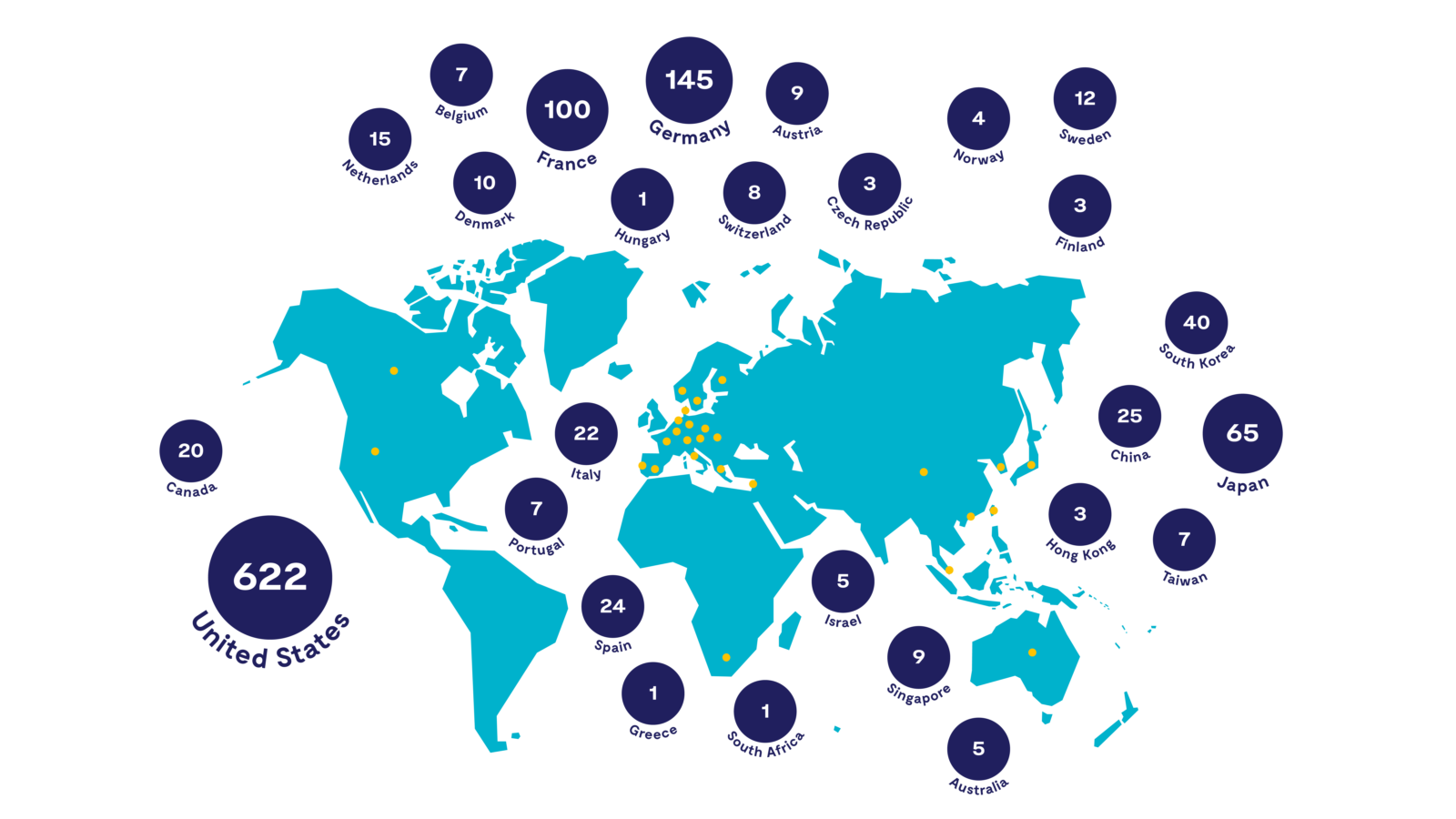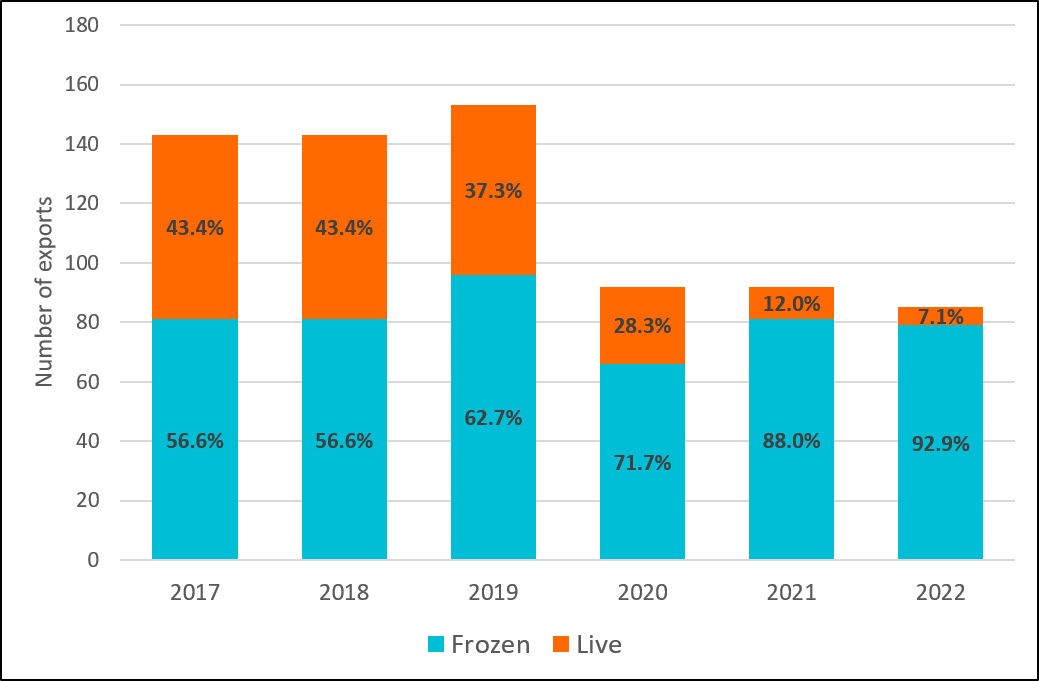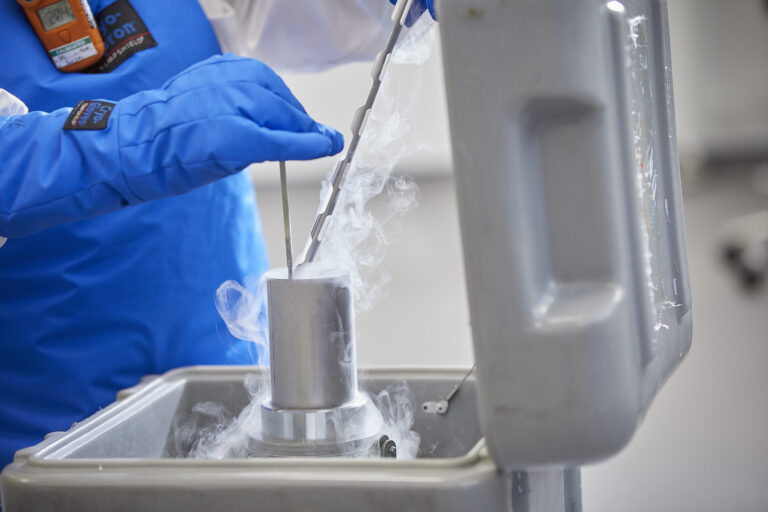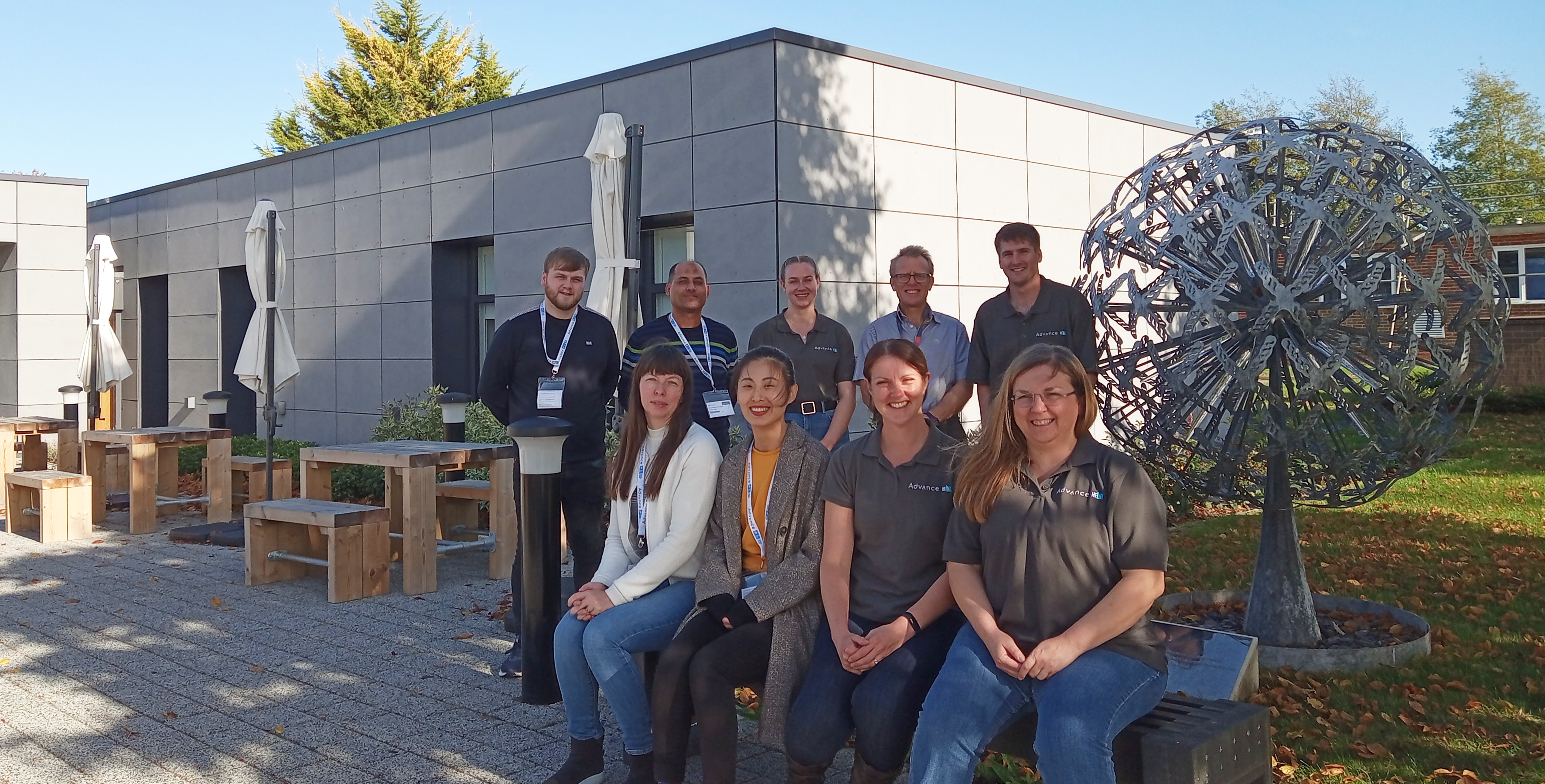The Mary Lyon Centre at MRC Harwell receives requests for biological material from all over the world and we do our utmost to support the scientific community by providing what is needed, in a timely fashion. In particular, as the UK node of the European Mouse Mutant Archive (EMMA), our National Mouse Archive ships out a large number of mouse lines, as frozen sperm/embryos or as live animals. As part of a routine review of our practices, we have looked back at changes in the way that we export materials over the last 5 years and see an important trend that we are keen to continue and further improve upon.
Through the National Mouse Archive, we provide a free sperm and embryo cryopreservation service to protect valuable mouse strains for future use, to reduce costs associated with ongoing colony maintenance, and to remove the need for continuous breeding of mice simply to maintain a line. Mouse strains stored in the Archive are made available to the scientific community, with the aim of promoting a cooperative future in mouse genetics that also reduces the number of animals that are used by providing access to existing mouse strains and discouraging researchers from creating a new line with the same genetic alterations. This means that we send a large numbers of shipments around the world.

For some time, our preference has been to ship frozen embryos/sperm or even just the tissues of interest to the researcher, rather than live mice, but progress made in persuading more international clients to accept delivery of cryopreserved material had been slow. However, uncertainty around air transport early in the COVID-19 pandemic presented an opportunity for us to toughen our stance as transport of live animals became harder and a new normal had to be accepted. Although 2022 was a year when much of life returned to pre-pandemic normality, a review of our processes highlights that we have maintained our new policy whereby live shipments are only made if there is no alternative, and that the percentage of exports sent overseas as live animals has reduced more than 6-fold since 2017.
Alongside the impetus provided by the pandemic, this change has also been made possible by rapid technological advances around cryopreservation and rederivation, and by the provision of training in cryorecovery techniques, including via our own Mouse Embryo and Sperm Cryopreservation training course, which was recently run for the 30th time. In addition, the reduced cost of transporting frozen material and the 3Rs (replacement, reduction, and refinement of the use of animals in research) benefit associated with reducing the amount of transportation stress should mean that shipment of frozen sperm or embryos is better for everyone. Indeed, in 2022, 22 requests for live mice from overseas clients (from a total of 77 shipments) were converted from being live mice to frozen material, after discussion with our client interface team.

This does not mean that the transportation of live mice has been abolished completely. Not all recipients have the capabilities to rederive mice from frozen material, so we support clients by putting them in touch with other organisations in their locality that we know can handle cryopreserved sperm/embryos and then send on live mice. This means that we can at least reduce the number of mice being subjected to the lengthy process of travelling by plane. We also provide this rederivation/repatriation service for other institutions and, as a result, we still send live mice across the UK. Where live animal shipments are the only option, discussions take place around the likely impact on the animals being exported, the availability of rederivation services, the detriment to the scientific programmes if the mice were not sent, and the cost of rebreeding at the recipient institution. A decision is then made on whether or not the export should proceed, ensuring that there is appropriate justification for any live shipments.
The use of mouse-line archives has already led to significant reductions in the numbers of animals used in research and rapid advances in cryopreservation and recovery techniques have allowed further refinement and reduction, including our ability to limit the transport of live animals. Importantly, the lead that the MLC is taking in this area has meant that the trend towards preferential shipment of frozen material over live mice is being mirrored across the whole EMMA consortium, as recently reported.




